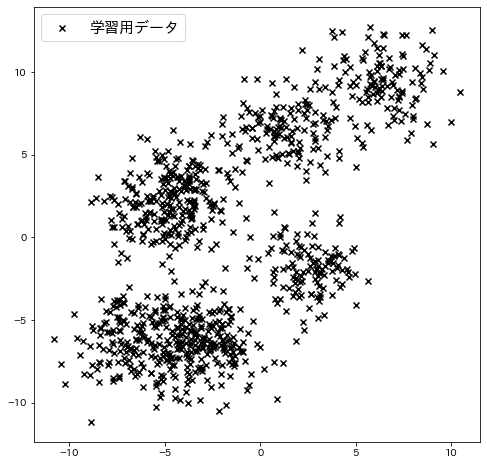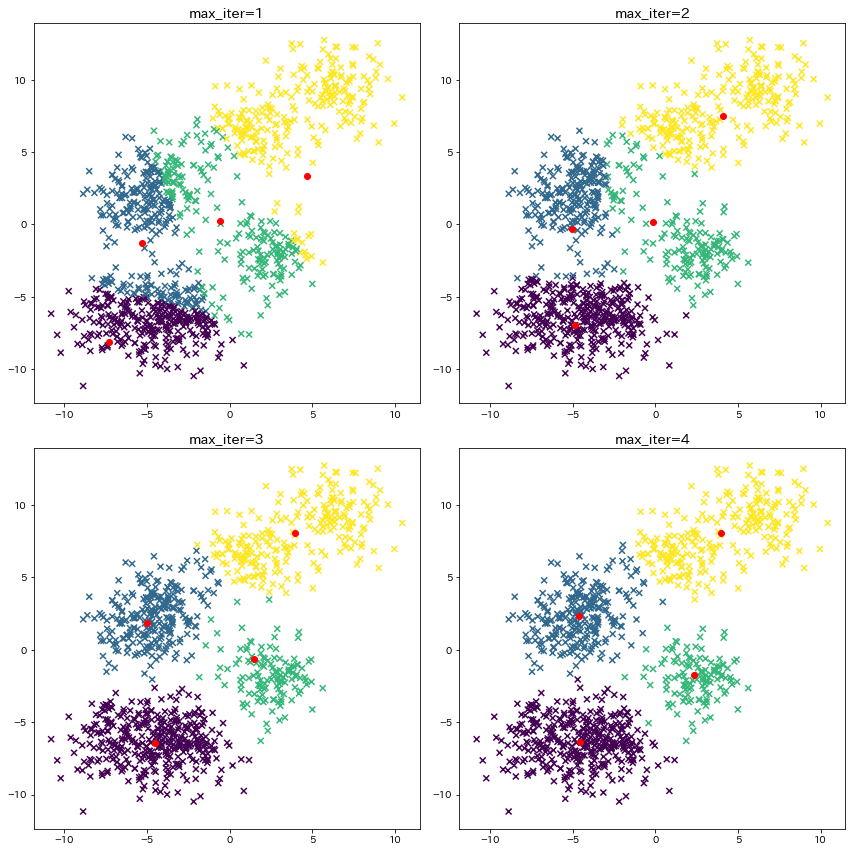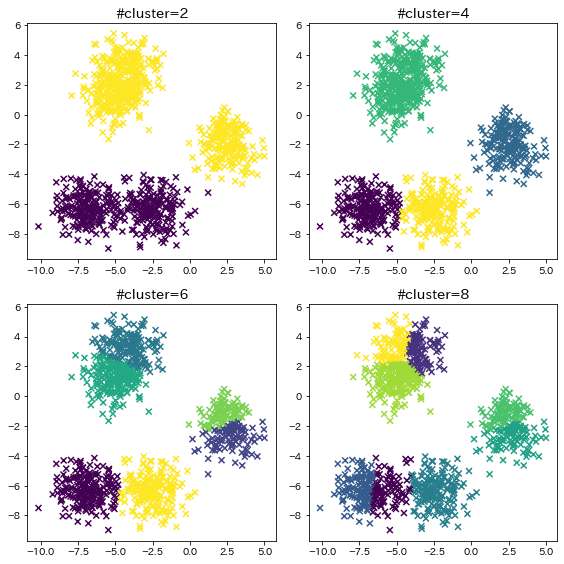k-means
k-means is a type of clustering algorithm. In order to group the given data into k clusters, the process of computing the average of each cluster and assigning the data to the nearest representative point is repeated.
import numpy as np
import matplotlib.pyplot as plt
import japanize_matplotlib
from sklearn.cluster import KMeans
from sklearn.datasets import make_blobs
k-means clustering example
create sample data
Create sample data with make_blobs and apply clustering to it.
n_samples = 1000
random_state = 117117
n_clusters = 4
X, y = make_blobs(
n_samples=n_samples, random_state=random_state, cluster_std=1.5, centers=8
)
# Initial value of the centroid of each cluster of k-means
init = X[np.where(X[:, 1] < -8)][:n_clusters]
plt.figure(figsize=(8, 8))
plt.scatter(X[:, 0], X[:, 1], c="k", marker="x", label="training dataset")
plt.legend()
plt.show()

Centroid Calculation
We can re-compute the centroid four times and see that the data are cleanly separated at the fourth time.
plt.figure(figsize=(12, 12))
for i in range(4):
plt.subplot(2, 2, i + 1)
max_iter = 1 + i
km = KMeans(
n_clusters=n_clusters, init=init, max_iter=max_iter, n_init=1, random_state=1
).fit(X)
cluster_centers = km.cluster_centers_
y_pred = km.predict(X)
plt.title(f"max_iter={max_iter}")
plt.scatter(X[:, 0], X[:, 1], c=y_pred, marker="x")
plt.scatter(
cluster_centers[:, 0],
cluster_centers[:, 1],
c="r",
marker="o",
label="Cluster centroid",
)
plt.tight_layout()
plt.show()

When clusters overlap
Check the clustering results when cluster data overlap.
n_samples = 1000
random_state = 117117
plt.figure(figsize=(8, 8))
for i in range(4):
cluster_std = (i + 1) * 1.5
X, y = make_blobs(
n_samples=n_samples, random_state=random_state, cluster_std=cluster_std
)
y_pred = KMeans(n_clusters=2, random_state=random_state, init="random").fit_predict(
X
)
plt.subplot(2, 2, i + 1)
plt.title(f"cluster_std={cluster_std}")
plt.scatter(X[:, 0], X[:, 1], c=y_pred, marker="x")
plt.tight_layout()
plt.show()

Influence of the number of k
n_samples = 1000
random_state = 117117
plt.figure(figsize=(8, 8))
for i in range(4):
n_clusters = (i + 1) * 2
X, y = make_blobs(
n_samples=n_samples, random_state=random_state, cluster_std=1, centers=5
)
y_pred = KMeans(
n_clusters=n_clusters, random_state=random_state, init="random"
).fit_predict(X)
plt.subplot(2, 2, i + 1)
plt.title(f"#cluster={n_clusters}")
plt.scatter(X[:, 0], X[:, 1], c=y_pred, marker="x")
plt.tight_layout()
plt.show()
